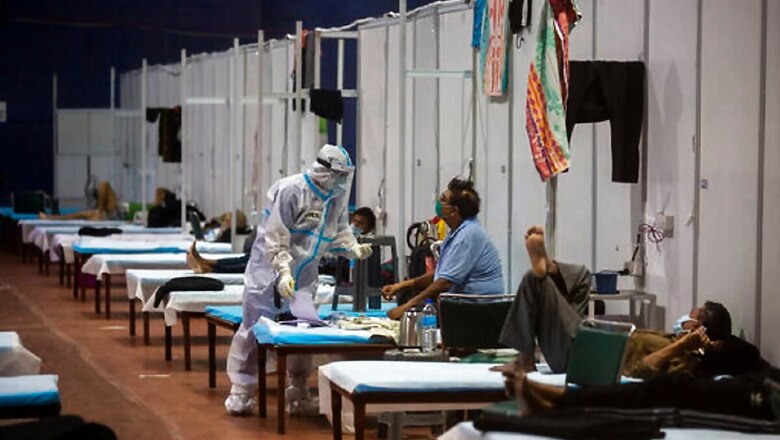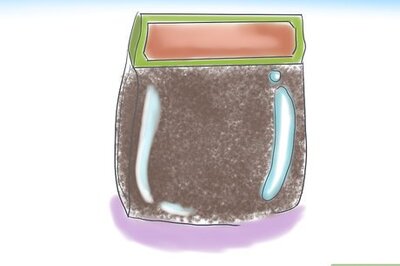
views
India has a dismal ratio of doctors and hospital beds, and the fragility of our healthcare infrastructure was amplified in 2020, when a global pandemic threatened to overwhelm our hospitals and medical centres. Covid-19, the gravest health threat in recent memory, has now pushed the country’s apex business chambers to also emphasise the need for hiking government health spend in the upcoming Union Budget for 2021-22. Typically, business chambers and India Inc send a wish list to the government for Budget each year, which includes some sectoral demands, suggestions on lowering the incidence of taxation on companies and individuals and for boosting infrastructure spending. Healthcare rarely finds a mention in such a wish list. But this year, things are different.
The Federation of Indian Chambers of Commerce and Industry (Ficci) and the Confederation of Indian Industries (CII) have both sought a significant increase in the Centre’s budgetary allocation for healthcare, among other demands, for the FY22 Budget. The Budget is widely expected to be presented by the month end.
Ficci wants the government to spend an additional half a per cent of the country’s GDP every year, for the next five years, on healthcare. This means the chamber is asking the government to increase health spend by nearly Rs 1 lakh crore each year till 2025. And CII wants the government to almost double its healthcare spend in three years to 3% of GDP. In 2020-21, the budgeted spend for healthcare was Rs 67,112 crore, which was just about 1.5% of the country’s GDP.
The rare emphasis by these two business chambers on hiking health spend follows close on the heels of some Members of Parliament ticking off the government for inadequate health infra. A parliamentary standing committee has already underlined the paucity of hospital beds, doctors, nurses and other medical infrastructure.
The Department-related Parliamentary Standing Committee on Health and Family Welfare has pointed out that the total number of beds in government hospitals was “grossly inadequate” in view of the rising Covid-19 cases. Latest data suggest there are 7,13,986 beds in government hospitals or one bed for 1,818 Indians (0.55 bed per 1,000 population). And a dozen states have an even worse ratio of beds to population. Obviously, such shortage of beds along with inadequate ventilator numbers further complicated pandemic mitigation. “As the number of cases was on the rise, a frantic search for vacant hospital beds became quite harrowing. Instances of patients being turned away from overburdened hospitals due to lack of vacant beds became the new normal. The scenario of patients holding oxygen cylinders rushing from pillar to post in search of bed in AIIMS Patna is a testimony to the fact that tear apart humanity. The committee is aggrieved at the poor state of healthcare system and therefore, recommends to the government to increase the investment in public health and take appropriate steps to decentralize the healthcare services/facilities in the country.”
An analysis by PRS Legislative on the Budget announcements for the healthcare sector in 2020-21 shows that between 2014 and 2018, the number of registered doctors in India increased by nearly a fourth, but despite this increase, there was a steady rise in the shortfall of doctors, specialists and surgeons. “As of 2018, there is a shortfall of 46% of doctors, and 82% of specialists including surgeons, obstetricians, gynaecologists, physicians, and paediatricians in Primary Health Centres across India,” the analysis said, adding that filling up healthcare human resource gaps in 16 states would require an outlay equivalent to 0.6% to GDP.
Jobs: The pandemic has exacerbated the already rising unemployment levels, both in rural as well as urban markets. Job losses have been unprecedented in the formal and informal sectors but the two chambers have suggested no concrete steps to boost employment. Ficci has spoken of incentivising investments in infrastructure, which would revive the growth cycle and thus lead to enhanced job creation. And CII has merely spoken of raising the ceiling of deductions on salaries (for income tax purposes) of existing employees. Both the chambers have underlined the need for measures to boot private investments too, so that more jobs are available.
Revenue: CII has asked the government to go for an “aggressive” disinvestment target for both, profit-making and loss-making public sector undertakings to generate additional revenue besides also looking at avenues to monetise surplus land. Ficci has gone a step further in the zeal to generate revenue from PSUs, suggesting that the government could pledge PSU shares to the RBI and thus raise resources at low rates.
“The market value of government shareholding in PSUs will be around Rs 15 lakh crore. A third of the shares can be pledged to RBI and government can raise Rs 5 lakh crore. This can be a loan at a low rate of interest – repo rate,” Ficci has said. The chamber has also asked for an accelerated disinvestment programme. This, when the government has been unable to meet even the disinvestment target for 2020-21 – reports suggest only about 5% of the proceeds targeted at the beginning of the year have been earned.
Read all the Latest News, Breaking News and Coronavirus News here




















Comments
0 comment